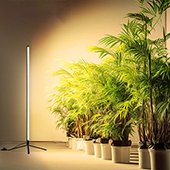Menu
Best Fruits and Vegetables to Grow in A Small Grow Tent
Have you ever thought about having your mobile orchard and mini vegetable garden, even amid the urban jungle, for all gardening enthusiasts?
Today, we’re going to talk about this fun and super practical gadget – the small tent. But don’t get it wrong, we’re not talking about those camping tents you carry on your back for outdoor adventures.
Instead, we’re talking about small planting spaces designed specifically for indoor gardening enthusiasts. It’s like a mini greenhouse that allows you to enjoy the pleasure of gardening in a limited space and harvest plenty of fresh fruits and vegetables.
All you need is to find a corner in your home and set up such a small tent, and you can start creating your green paradise.
Everyone must be eager to know: what are some best fruits and vegetables suited for planting in a small grow tent?
Let’s embark on this delightful exploration journey of being a micro farmer together! Take note of those fruit and vegetable varieties worth trying and essential equipment. I believe that soon enough, you’ll be able to harvest plenty of surprises and deliciousness in your little tent.
Table of Contents
Best Fruits for Small Grow Tents
In the unique planting environment of a small tent, selecting the right fruit varieties is crucial. Here are our carefully selected 5 or more fruits that not only adapt well to tent conditions but are also easy to manage and offer substantial yields.
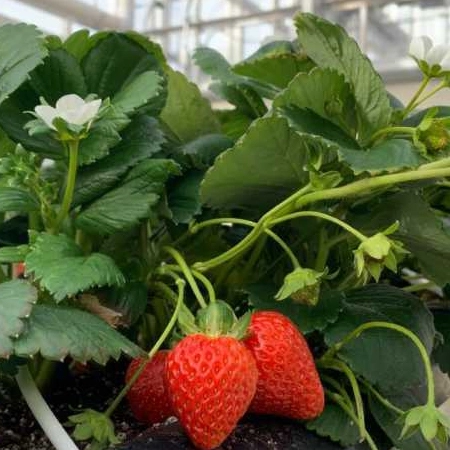
Strawberry
Strawberries are considered the star fruit for small tent cultivation, as they adapt well to varying light, temperature, and humidity conditions. With their compact size, strawberry plants are highly suitable for limited-space cultivation.
Continuous Harvest: Strawberries have the characteristic of multiple flowering and fruiting cycles. You can harvest them continuously from early spring to early summer, ensuring a constant supply of fresh fruit in your tent.
Planting Tips: Choose well-draining soil or hydroponic medium, keep it moderately moist, and regularly apply a suitable amount of organic fertilizer. Prune flowers and fruits regularly to avoid excessive nutrient consumption. Pay attention to controlling common pests such as spider mites and aphids.
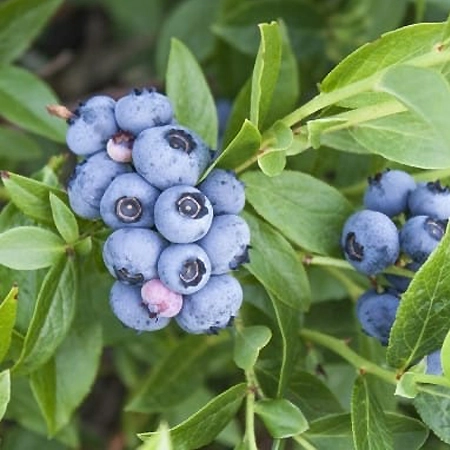
Blueberry
Opt for dwarf or semi-dwarf blueberry varieties that are more suitable for the limited height space inside a small tent.
Acidic Soil Requirement: Although blueberries have specific soil acidity requirements (pH between 4.0-5.5), this condition can be met inside the tent by using specialized blueberry growing medium or hydroponic systems.
Light and Temperature: Blueberries thrive in ample sunlight, so ensure sufficient light exposure and suitable temperatures (15-25°C) inside the tent. Subjecting them to moderate cold treatment during winter helps break dormancy and promotes flowering in spring.

Tomato
Opt for dwarf or hanging tomato varieties, such as cherry tomatoes, which adapt well to the limited space inside the tent.
Light and Temperature: Tomatoes require ample sunlight, so ensure sufficient light exposure inside the tent and maintain temperatures between 18-28°C to avoid adverse effects on fruit set from nighttime low temperatures.
Support and Pruning: Set up support structures or hanging ropes to guide plant growth upwards, and prune regularly by removing side shoots and concentrating nutrient supply to the main stem and fruits.
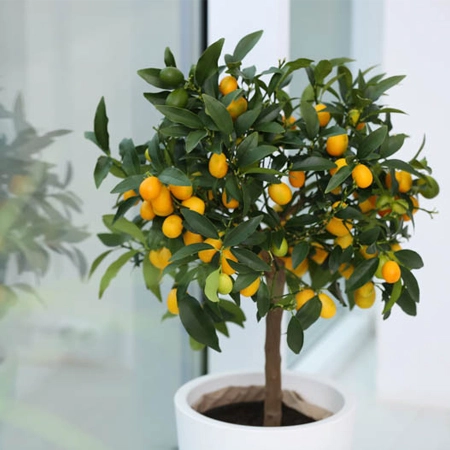
Kumquat
Kumquat trees are both ornamental and edible, making them an excellent choice for decoration and consumption in a small tent.
Light and Temperature: Kumquats prefer abundant sunlight and warm, humid conditions. Ensure sufficient light exposure inside the tent and maintain temperatures above 5°C during winter to avoid frost damage.
Pruning and Fertilization: Regular pruning is necessary to maintain tree shape, stimulate lateral branch growth, and increase fruit yield. Apply balanced fertilizer regularly to ensure nutrient supply.
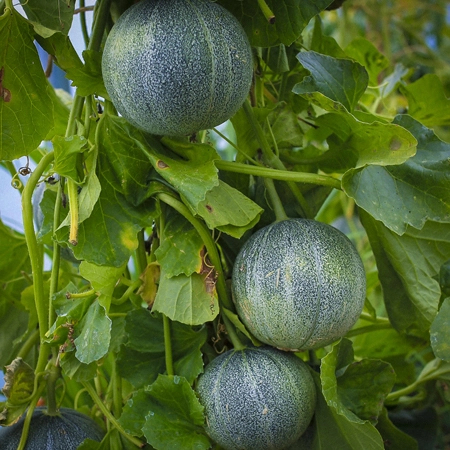
Melon
Choose dwarf or small melon varieties that are suitable for the limited space inside the tent.
Light and Temperature: Melons prefer warm, well-lit environments. Ensure sufficient light exposure inside the tent and maintain temperatures between 20-30°C. Lowering the temperature at night is beneficial for sugar accumulation.
Support and Pruning: Set up support structures or hanging ropes to guide vine growth, prune regularly by topping the main vine, and retain some healthy lateral vines. Pay attention to controlling pests and diseases such as aphids and powdery mildew.
Best Veggies for Small Grow Tents
Most vegetables perform well under growing tent conditions. I do know that tomatoes and peppers (as well as most herbs like basil, cilantro, chives, etc.) have light/heat requirements similar to those of cannabis, so you could try following cannabis guidelines for light, heat, and humidity.
Lettuce and spinach both tend to be sown at temperatures above 70°F, so keep that in mind – but unless you keep your house super hot or have a heater in the tent, it’s unlikely a grow tent will get that warm.
Spinach
Rapid Growth: Spinach grows rapidly, with tender leaves ready for harvest approximately 4-6 weeks after sowing, making it suitable for multiple cropping cycles within a small tent system.
Light & Temperature: Spinach has low light requirements and can thrive in semi-shaded environments. Maintain temperatures between 15-25°C to prevent leaf aging due to excessive warmth.
Lettuce
Variety of Choices: Lettuce comes in a wide range of varieties, such as romaine, butterhead, and red leaf lettuce, allowing for selection based on personal taste preferences. Light & Temperature: Lettuce prefers cool, moist conditions. Inside the tent, ensure moderate light exposure, avoid direct, intense sunlight during summer months, and maintain a temperature of 15-20°C.
Basil
King of Herbs: Basil boasts a strong, distinctive aroma, making it a versatile culinary staple and an ideal herb variety for cultivation in small grow tents.
Light & Temperature: Basil thrives in sunny, warm environments, requiring ample light inside the tent and maintaining temperatures between 20-30°C. Winter care should include protection from cold.
Chives
High Space Utilization: With their compact size, chives can serve as border plants or be intercropped with other vegetables, maximizing every inch of space within the grow tent. Light & Temperature: Chives have low light requirements and can tolerate a broad temperature range (10-25°C), making them easy to manage within the tent environment.
Radish
Rapid Harvest: Radishes rank among the fastest-growing root vegetables, with a maturity period from sowing to harvest of just 20-30 days, making them highly suitable for quick turnover within a small tent setup.
Light & Temperature: Radishes favor cool climates; within the tent, ensure ample light exposure and maintain temperatures between 15-20°C to prevent woody texture development in the edible roots due to excessive warmth.
Small Grow Tent Essentials
For the tastiest fruits and vegetables, you’ll need some gear. Just a few key items will transform your small grow tent!
Light is a Must: LED Grow Lights are Best for Small Spaces
LED grow lights, with their energy-saving properties and low heat output, are the ideal lighting solution for small grow tents. Unlike traditional light sources, they don’t generate excessive heat, mitigating adverse temperature effects within confined spaces.
Despite spatial constraints, LED lights still deliver ample photosynthetically active radiation, catering to the photosynthetic needs of various plants and fostering healthy growth. Opt for full-spectrum LED lamps to ensure a proper balance of red and blue light, tailored to the spectral requirements of different plants at various growth stages.
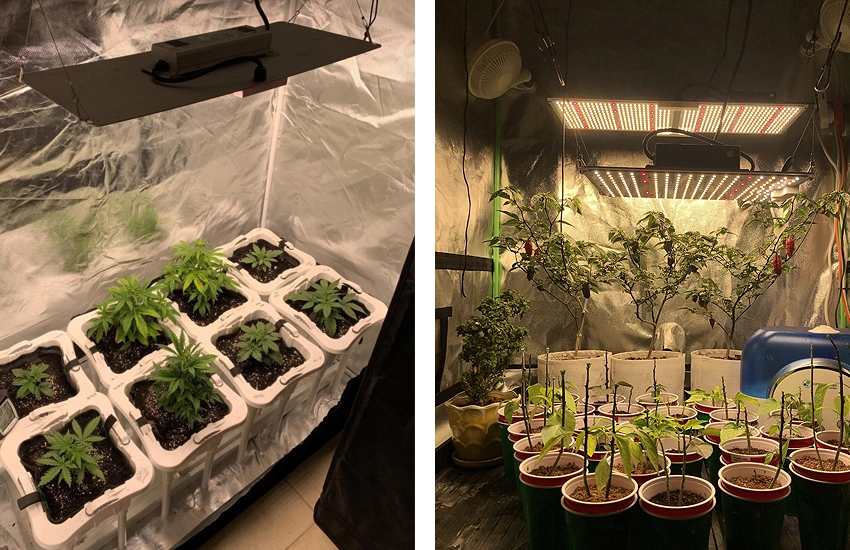
Must Breathe: Even a Small Fan Can Keep Air Moving
In a small grow tent, proper ventilation is critical to prevent mold growth and pest infestations. Even a basic small fan can effectively promote air circulation, ensuring ample oxygen supply within the tent while helping to expel moisture and harmful gases.
When installing a fan, ensure it covers the entire cultivation area without creating airflow dead spots. Operate it on a timer or with humidity sensor control to maintain optimal air humidity and temperature.
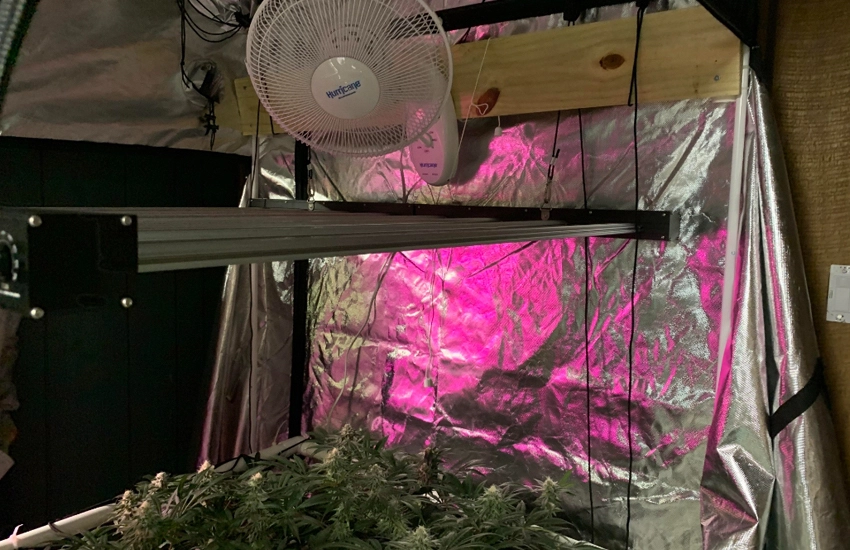
Pot Size Matters!
Fabric pots (a.k.a. Smart Pots or Root Control Bags) allow roots to breathe freely, enhance air circulation, and minimize water accumulation, which helps prevent root diseases. Their lightweight and collapsible nature is also well-suited for the spatial constraints of a small grow tent.
Broccoli and peppers will ultimately require relatively large pots at maturity – Jalapeño peppers should be given at least one gallon, while broccoli may need 3 to 5 gallons.
Feed Your Plants: Seek Quality Soil and Nutrients Designed for Containers
Select premium soil specifically formulated for container gardening, which typically offers excellent drainage, appropriate water retention, and rich organic matter content, providing plants with the nutrients they need for initial growth.
As plants mature and progress through their growth cycle, regularly apply appropriate amounts of liquid plant food or slow-release fertilizer, replenishing essential elements like nitrogen, phosphorus, potassium, and trace minerals to ensure sustained healthy growth, increased yields, and superior quality.
Final Thoughts
No longer settle for bland, lifeless vegetables from supermarket shelves; embrace the power of owning a grow tent to infuse your table with vibrant freshness! Take charge of your ingredients’ origin, and there’s no denying the unparalleled satisfaction that comes from nurturing plants from seed to harvest.
Begin simply, daring to innovate as you go, cherishing the process early on, for the allure of the gardening journey lies not only in reaching the destination but also in the exploration and experiences along the way.
Are you itching to delve deeper into your horticultural prowess? Gardening joy stems from bold experimentation and the eagerness to share. Whether you encounter confusion or acquire valuable insights in your planting endeavors, we eagerly await engaging in discussions and sharing the joys and wisdom of gardening with you.
Get in touch with us!
From custom light planning, to tailored quotes, and everything in between, our team of horticulture experts are always ready to assist.

